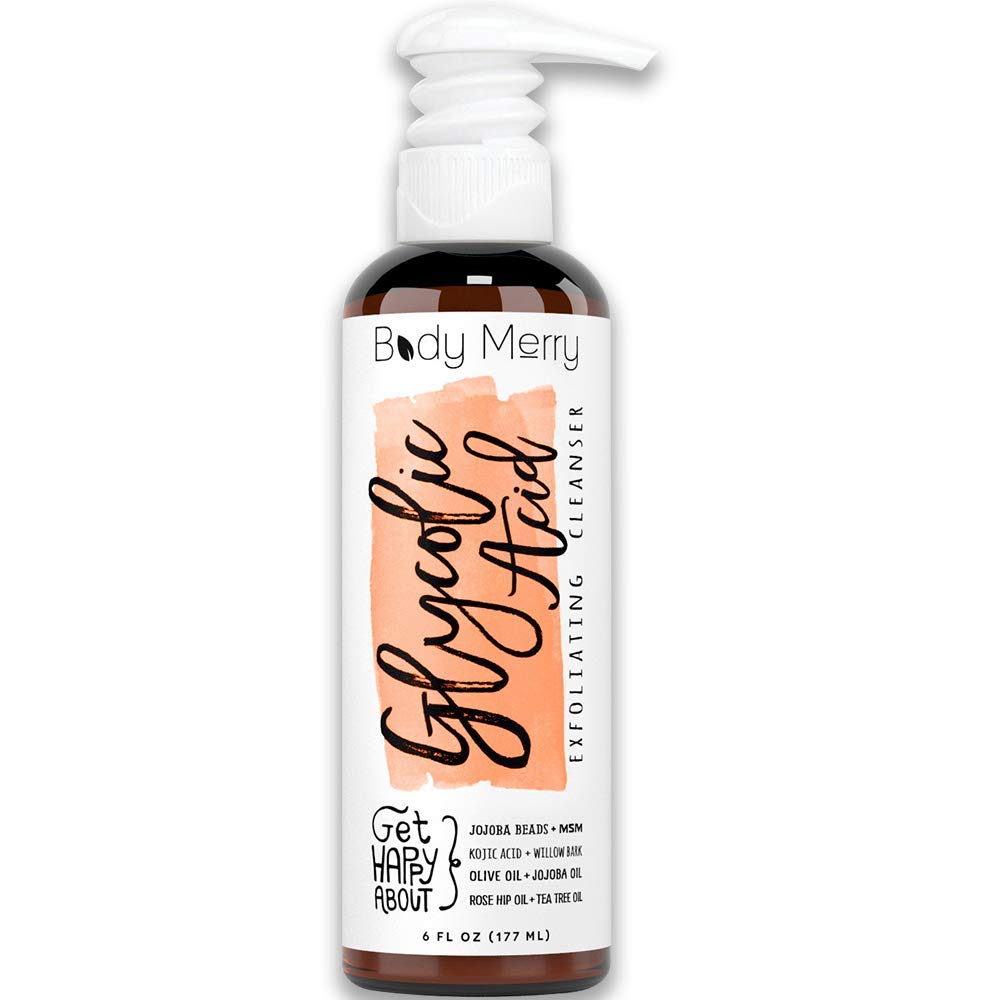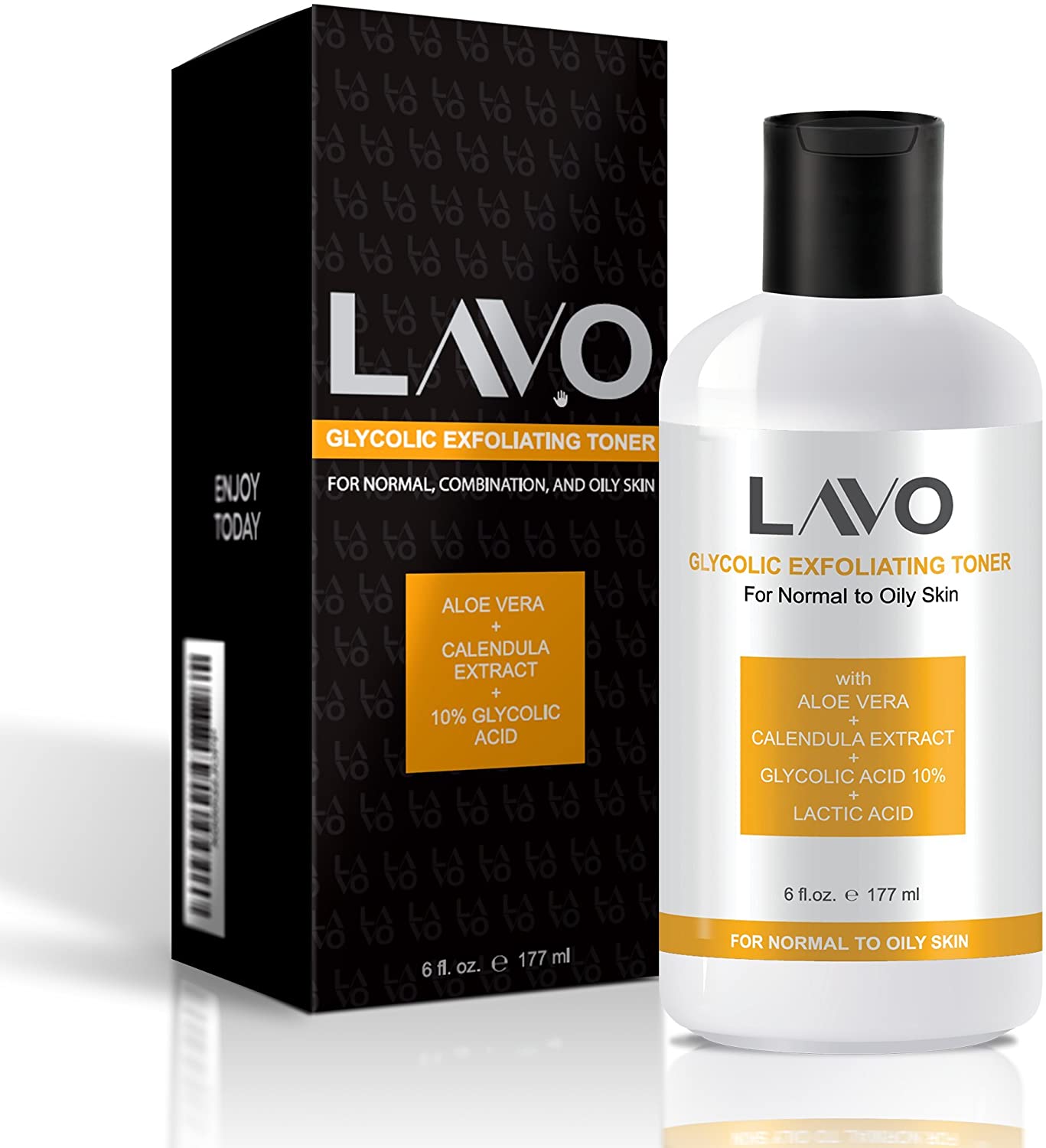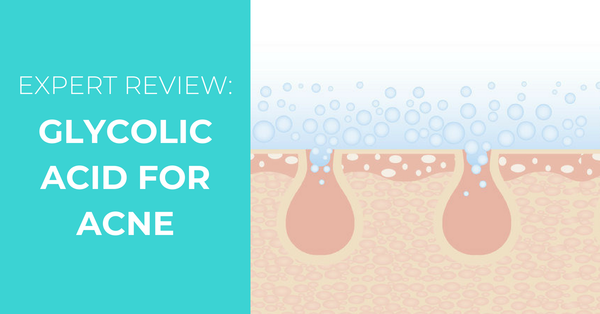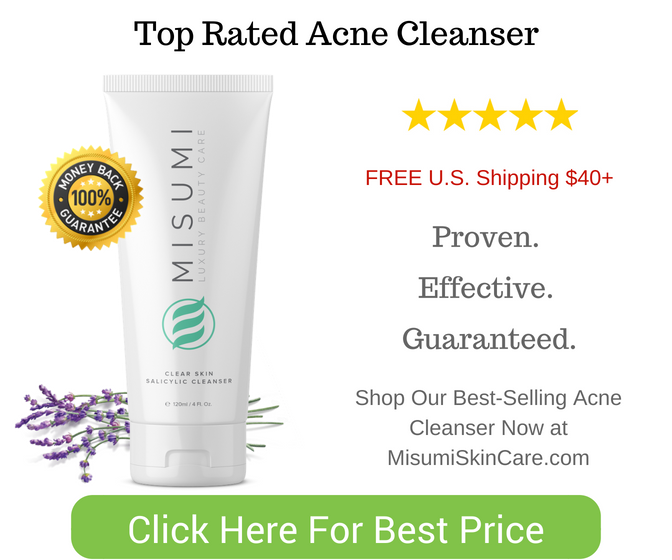Contents
Acne is a common skin condition that affects more than 90% of the world population at some point in their life. There are multiple treatments that you may have tried but depending on your specific case, genetics, environmental conditions, chemistry and numerous other reasons, it may be difficult to find a product with active ingredients that really helps deal with acne /acne scarring within your skin care routine, and that’s exactly where we come in to help.
Chemical peels are a common treatment used to exfoliate the skin. A professional chemical peel comes in three forms of strength – a mild depth, medium depth and deep. Glycolic acid is used as a medium depth peel. Medium depth peels or a superficial peel are usually used more professionally where mild strength peels can be purchased for home use such as a glycolic acid peel.
Beauty experts believe there’s one active ingredient, glycolic acid that’s an all – in – one solution to skin care. Below we discuss its strengths and weaknesses in terms of combating acne, who it’s most suitable for, how to incorporate it safely into your routine and which products you should try based on what you’re trying to achieve, one of the most common products you’ll probably see a lot about is the glycolic acid peel.
Glycolic acid peel therapy is simple and inexpensive and highly popular- if used correctly. You’re best using a glycolic acid solution over those such as lactic acid.
Glycolic acid is a water – soluble AHA (alpha hydroxy acid) which is derived from sugar cane, and it is one of the most used AHAs within the skin care industry. Alpha hydroxy acids are well known within the cosmetic industry they’re closely related to beta hydroxy acid and help aid the majority of skin conditions. The difference between beta hydroxy acids and alpha hydroxy acids is oil and water. The functions of glycolic acid are similar to those of hyaluronic acid breaking down and loosening the substances that are on the top layer of the skin.
Due to it having the smallest sized molecules glycolic acid can penetrate the skin easily allowing it to exfoliate the skin more effectively. It helps dissolve the bonds that hold the skin cells together stimulating your skin to create more collagen.
Many acne treatment products also contain glycolic acid. This is simply because it can help unclog pores and blockages, preventing comedones, blackheads, and inflamed breakouts from forming, this is where a glycolic acid peel is effective, they also help reduce pore size, and been known to help post acne pigmentation.
This miracle product can lighten dark skin discoloration left by acne wounds on the surface layer and can soften the look of raised and pitted scars for more efficient scar treatment you would be looking at a more professional glycolic acid peel.
This all depends on what your specific skin goals are, but you can add glycolic acid to your skincare routine as early as your teen years if used correctly as it can help towards blemishes and visibly improve your skin texture.
A glycolic acid peel is also effective when trying to deal with mild acne scars as well as hyperpigmentation. By removing the outer layer of the skin, glycolic acid increases cell turnover and helps new skin cells generate faster, resulting in improved complexion and skin texture.
It can also be used as part of an anti ageing routine, it’s never too late to start to incorporate it into any beauty routine.
Glycolic Acid Benefits
There’s good reason to why it’s used in various Beauty products, from deep peels to anti aging whilst being used for various skin concerns. It works well as an exfoliator, but that’s not all it does for our skin.
Benefits –
After a few uses, Glycolic acid can –
- Effective with treating Acne.
- Enhances skin texture.
- Reduces Hyperpigmentation and dark spots.
- Lessens fine lines & wrinkles – (even those fine wrinkles)
- Hydrates the dryer skin type.
- It may help boost collagen production.
- Effective with anti aging.
Side Effects –
With any product you start to use, it is important to understand the potential side effects that may occur.
- Tingling.
- Redness.
- Skin irritation.
- Itching
- Some products, such as certain Glycolic acid peels could cause increased sensitivity to sun exposure that could lead to sunburn if you forget to use sunscreen. (always wear sunscreen when products do not contain a SPF)
These can occur in early use, if occur at all and should go away within a few weeks of using.
How to use Glycolic Acid
There are a few ways that glycolic acid can effectively be used – always be sure to use sun protection with any skincare remedies including glycolic peels.
A Summary –
You should start with a product that contains between around 5 to 8%, it doesn’t seem a great deal but it is high enough to start doing something within a safe range. A glycolic exfoliator is a better option as this removes dead skin cells allowing the product to be more effective. Always try and keep an eye on your skin with how it reacts – if any irritation does occur, reduce usage to 2-3 times a week for 2 weeks and see how it goes, plenty of people find when they use a decent product with 5-8% concentration is quite enough to keep the skin healthy whilst staying clear of fine lines and blackheads.
2. Why Is Concentration & Building Up Important?
When you buy over the counter products they usually contain between 1 – 30% concentration whereas chemical peels carried out by professionals have between 30 – 70% concentration.
To get the benefits of glycolic acid at home, use a lower percentage as part of your skincare routine. You may find there’s a mild tingling once applied but this is absolutely normal, if anything it indicates the product is working but don’t worry if you don’t feel this the product will still be working just each individuals skin can react differently.
Start the routine every few days at first then increase after 3-4 weeks if you’ve experienced no problems your skin will be able to handle more as it will be used to the acid. Never try using over 20% concentration as this can actually do more harm than good to your skin if not used correctly – there’s a reason some people are referred to a specialist who are trained to use higher strengths safely and effectively.
If you’re using a low percentage consistently will help keep your skin clear with a healthy glow, some other products that contain glycolic acid can be purchased rather than trying to apply a stronger peel.
3. Spot Treatment
When you see a zit forming apply 2.5% benzoyl peroxide, allow it to dry then apply 10% glycolic acid. You have to catch the zit when it very first starts surfacing for this treatment to be fully effective, it can help to stop the pimple getting any larger.
Only a small amount of product is needed for this.
Most glycolic acid containing products are designed to be incorporated into the daily skincare routine for healthy skin and have high concentrations.
To balance it out, manufacturers usually include various comedogenic oils and moisturizers to make the product a lot gentler. When combating acne, make sure to buy oil-free glycolic acid, no oil soluble products to prevent clogging of the pores.
Exfoliators containing glycolic acid are so much better suited for pregnant women than those containing salicylic acid, since there is a high risk of allergy. Salicylic acid can cause skin irritation, soreness and dryness – if you have been using salicylic acid and experienced any of the above you should speak to a pharmacist or doctor so they can provide medical advice.
High concentrations of glycolic acid (10% and more) can cause severe burning, irritation and redness if you’re not careful, especially for sensitive and dry skin types. When using glycolic acid in combination with benzoyl peroxide and/or Vitamin A containing products, which are both a powerful combination, you need to be careful not to irritate the skin since benzoyl peroxide increases sensitivity, it just all depends on the concentration levels
Make sure you’re not using glycolic acid peels on inflamed/active acne and open pores. Though a lot gentler than many other chemicals, glycolic acid is still an active ingredient and it can cause severe skin damage if you’re not careful with it and the healing process could take a while.
Best Glycolic Acid Containing Products
Here are some of the best glycolic acid containing products on the market.
#1 Glycolic Acid Exfoliating Cleanser by Body Merry – Best to Include in Daily Skincare Routine

This face wash is designed to be included into your daily skincare routine. The product contains 2.5% glycolic acid, which is a fairly low concentration, but it is still effective at exfoliating the skin, removing dead skin cells and excess oil.
The formula also contains a number of natural oils like Olive, Rosehip and Tea Tree, and also includes cucumber (great moisturizer) and organic aloe (promotes clean complexion).
Key features
- Removing dead skin cells and excess oil
- Contains Natural Oil
Pros
- alleviate clogged pores
- slough away dead skin, dirt and oil build up
- prevent or treat breakouts and acne
Cons
- not good for sensitive skin
- too drying and cause irritation
In terms of acne, the product will be effective with consistent use, but it will primarily act as a prevention mechanism rather than treatment. If you have mild acne and want to minimize it in the future, give this product a try.
As for customer reviews, the product enjoys a solid 4.5 star user rating on Amazon with over 1600 reviewers sharing their, mostly positive, experience and recommendations.
#2 Insta Natural Glycolic Acid Serum – Best for Combating Breakouts and Supporting Peels

This product is best suited for dry, sensitive and irritated skin, and helps deal with acne breakouts and sunburns while improving overall complexion and balance, and accelerating cell turnover.
It contains 8% glycolic acid, which is great when used regularly. The pH of glycolic acid is 3.5, which is also very good for clearing mild to moderate breakouts.
Other ingredients include Vitamin C, Hyaluronic acid (helps repair damaged tissue), Argan and Rosehip oils (used to moisturize the skin) and a unique complex of herbal ingredients.
Key features
- Herbal Ingredients
- suites for dry, sensitive & irritated skin
Pros
- perfect clarifying solution to nourish skin
- Boost the skin’s natural cell turnover
- increase the production of healthy skin cells
Cons
- Depending on your skin’s level of sensitivity
Customer reviews are mostly positive, with over 300 reviewers sharing their experience on Amazon and earning the product a solid, 4.5 star user rating.
#3 Glycolic Acid Toner by Lavo – Best for Moderate Breakouts/Stubborn Acne

With consistent, daily use the product helps reduce inflammation, stubborn/moderate acne-breakouts and mild acne scars.
The product can be safely used every day, but no more than once per day. It is also effective at preparing the skin for serums and/or creams – the final step of a skincare routine.
Key features
- suited for oily, scne-prone skin
- reduce inflammation
Pros
- fights acne causing bacteria
- Prepares face for Serums and Creams
- No Parabens
Cons
- will dry out if daily use
- Strong effect – not good for sensitive skin
#4 Glycolic Acid Gel Peel by Divine – Best for Weekly Peels

The product is designed for weekly, professional peeling procedures and contains pure (up to 99%) glycolic acid. The only other ingredient is distilled water.
A single bottle is enough for 5-10 full facial feels and comes at 3 different concentrations – 10% (light peel), 40% (medium peel) and 60/70% (deep peel). If you’re planning to do the procedure at home, I’d strongly recommend to try the 10% version to minimize any risks that you can inflict to your skin on accident, or due to the lack of proper knowledge. If you have stubborn acne or severe breakouts, you may use the peel up to 3 times a week, but don’t try to use it every day. Your body needs at least 24 hours to recover from a previous procedure.
Key features
- professional peeling
- single bottle is enough for 5-10 full facial
Pros
- Ideal for brown spots and uneven skin tone
- increase cell regeneration
Cons
- not safe for intimate areas
- peel is very stingy
CONCLUSION
Glycolic acid is a fantastic active ingredient for fighting acne, fine lines, wrinkles, hyperpigmentation and improving the skin’s overall texture and complexion. While it may not be as fast and strong as other chemicals like antibiotics, remember that there are close to no side effects related to glycolic acid and with consistent use, you’ll absolutely notice positive results.
Have you used glycolic acid before? What results did you experience? How long did it take you to notice improvements? Did you use it as a peel or included it into daily skincare routine? Share your thoughts with everyone in the comments!



